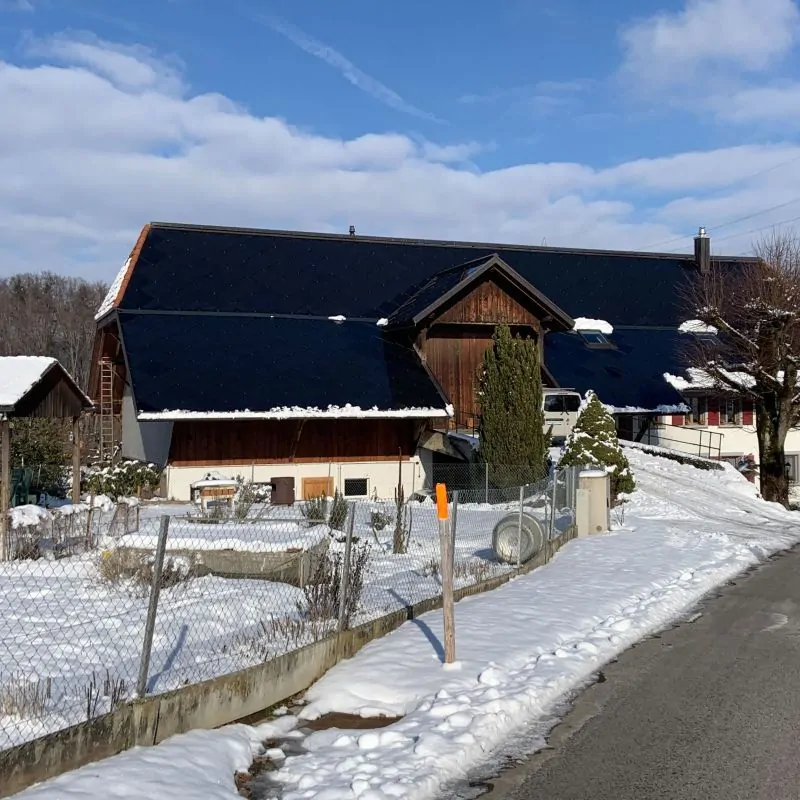The efficiency of a photovoltaic system is usually measured by its efficiency, i.e. the ratio between the energy generated and the power of the radiation captured.
Solar cells capture the sun’s rays and convert them into electricity, but energy is lost in this conversion. So you measure the proportion of energy that you can actually use as electricity when the conversion is complete.
This is only a theoretically measurable value, as the output of a solar system depends on many parameters:
- The technology used: monocrystalline, polycrystalline or amorphous panels.
- The power of the photovoltaic system
- The orientation of the system
- The inclination of the solar panels or roofs
- The geographical region: solar radiation is not the same everywhere. However, this does not mean that only those who live in sunny regions can achieve a good output.
- The surface area of the installation
- Possible shading (trees, buildings nearby, etc.);
What can affect the efficiency of a photovoltaic system?
One of the most common impairments is dirt left on the surface of the photovoltaic modules. Dust, dirt, sand, bird droppings: rain is usually sufficient, but sometimes additional cleaning is required. Snow left on the panels, on the other hand, completely prevents electricity generation. Unlike solar panels, SunStyle solar tiles have no frame, which not only enhances aesthetics, but also allows the tiles to be cleaned naturally by rainwater. Since there are no snow catchers or hooks, snow is removed very quickly, which increases energy production in winter. The SunStyle solar roof is practical maintenance free.
Lower performance can sometimes be explained by shading on your roof surface. This is the case, for example, if tree branches have grown since the system was installed. This circumstance should be checked regularly.
A period of excessive heat can also affect the output of the photovoltaic system. In this case, no measures need to be taken, as falling outside temperatures will normalise the output level again.

How high is the output of a solar system?
The efficiency of a photovoltaic system is expressed as a percentage.
The electrical power generated is expressed in peak watts.
The received solar power is equal to the area in m2 multiplied by 1000 (solar radiation is between 1000 and 1500 kWh per square metre per year depending on the region – about 1100 kWh/m2 for Bern – we assume 1000 to simplify the calculation).
For example, if a polycrystalline solar module has an electrical output of 250 Wp and an area of 1.6 m2 , its efficiency is : 250/(1.6 x 1000) = 15.62 %.
The efficiency of a solar module varies depending on the construction quality of the module (width of the edges, density of the cells in the modules, etc.) and the technology used. Thus, if two solar modules have the same surface area, the solar module with the higher efficiency will convert more solar energy into electricity. Therefore, a high efficiency is especially interesting on a roof where there is not much space to place the panels.
Is the output per m2 a relevant indicator?
In contrast to solar panels, a solar roof has a much larger usable area.
Where photovoltaic modules can only be installed on roof tile surfaces without any obstacles (such as skylights, ventilation, chimneys, etc.), solar tiles easily enclose these obstacles and thus optimise the usable roof surface. Therefore, even with a slightly lower output per m2 , a solar roof still uses much more surface area than simple photovoltaic modules and mathematically produces a much larger amount of energy.
What are the industry standard values for efficiency?
The efficiency of solar cells is limited because they do not absorb all the energy from the sun. Solar cells contain a semiconductor, mainly silicium, in which the reactions take place that are necessary to generate electric power. Sunlight consists of a variety of different wavelengths and thus of photons that transport different amounts of energy. In the semiconductor, some of them fail to excite the electrons, while others deliver more energy than they need. The efficiency of solar cells is limited because they do not use all the energy transmitted by the sun.
Average output depending on the type of photovoltaic system :
- Solar panels made of amorphous silicium have a rather low efficiency, usually between 6 and 9 %.
- Polycrystalline solar panels have an efficiency between 13 % and 18 %. This is the most commonly used type of solar panel.
- Monocrystalline solar modules are the most powerful on the market, with an efficiency of up to 24 %.
SunStyle uses high performance monocrystalline PERC silicium. Our solar tiles are smaller than conventional solar panels, so they can cover a larger area of your roof and generate a greater amount of energy.
A solar module is on average two m2 in size. If its efficiency is 18%, it converts 18% of the incoming solar energy into electrical energy. If the energy received is 1000 W/m2, the panel generates:
18 % x 2 x 1000 = 360 Wp per panel. So for a 3 kWp system (which is commonly recommended for a 100 m2 house) you would need 9 solar panels.
What surface of solar roof would it take to cover the energy needs of a 100 m2 house?
The average rated power of the SunStyle solar roof tiles ranges up to 173 kWp per m2. Theoretically, therefore, you would need 18m2 of active roof tiles, but as already mentioned, many factors play a role in the exact calculation.
To note: The Federal Office of Energy in Switzerland makes it possible to estimate the possible output of one’s own roof. Similar simulators are also available in many European countries.
At the beginning of our estimate, we carry out an analysis of the situation of your roof. Then we design your roof with active, inactive and composite solar tiles, intelligently arranged to give you uniform aesthetics and maximum output. Request a consultation!
For more information about SunStyle’s solar roof, visit sunstyle.com
Power your interest in the future of solar roofing by following us:
Instagram @sunstyle_solar
Facebook @sunstylesolar
LinkedIn linkedin.com/company/sunstylesolar
Youtube @youtube channel


